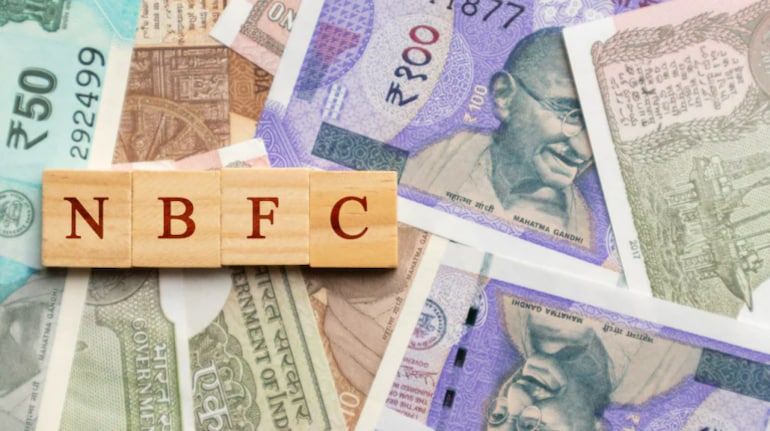



India’s non-banking finance companies (NBFCs) may have a tough year ahead on account of tight regulations from the Reserve Bank of India (RBI) and intense rivalry from competition, said industry experts.
Industry experts said the central bank has been tightening rules for shadow banks in the aftermath of the collapse of erstwhile Dewan Housing and IL&FS focusing on capital requirement, and governance standards.
But what has impacted NBFCs more is the changes in asset classification, experts said.
Mahesh Thakkar, Director General, Finance Industry Development Council (FIDC), an NBFC industry body, in a letter to Union Finance Minister Nirmala Sitharaman, said: “The ticket size of the loan, as a determining factor for use of tools of recovery of that particular loan, for NBFCs is not justifiable.”
At this point, the asset norms applicable to NBFCs are similar to those for banks. An RBI circular dated November 12, 2021 said that an NBFC loan will be tagged as non-performing asset (NPA) if an overdue amount is not paid by the 90th day, just like it is for banks.
“The underlying need to bring parity with banks, housing finance companies (HFCs) and other financial institutions (FIs) are not fully addressed.
Under the Securitisation and Reconstruction of Financial Assets and Enforcement of Security Interest (SARFAESI) Act, for NBFCs, the enforcement of security interest is applicable only in cases where the minimum ticket size is between Rs 20 lakh and Rs 50 lakh. This is not justified since no such clause exists for HFCs and banks,” Thakkar explained.
More tightening
Experts said the sector is likely to see more tightening by the central bank this year, which could impact their core lending business.
“On the compliance part of NBFCs, we can expect tougher guidelines alongside new changes which can affect the core business,” said Varun Sharma, Co-founder, NBFC Advisory, an NBFC solutions and advisory company.
Sanjay Agarwal, Senior Director at Care Ratings, said that RBI is working towards bringing the NBFC sector under the broader regulatory umbrella.
“RBI is harmonising the regulatory measures of NBFCs and banks. This, in turn, would push NBFCs to focus on their lending business,” Agarwal said.
Ratings impact
FIDC’s letter also highlighted challenges in the eligibility criteria for small and medium-sized NBFCs.
Thakkar said: “The rating model which is followed by all the accredited credit rating agencies entails “size” as an important parameter for NBFCs.
All the credit rating agencies use the same scale to rate both, large and small NBFCs. In such a scenario, it is practically impossible for a small-sized NBFC to get the desired level of credit rating despite a sound balance sheet and excellent track record.”
Echoing these concerns, Sharma said that credit agencies are using old and pre-defined parameters which are not updated frequently.
“There is a need for rating agencies to look beyond the credit lending numbers and aspects. Growth of NBFCs has peaked in the last five years which has led to modern techniques of operations in place. Agencies should also look at lending and other operational aspects,” Sharma said.
Growth and competition
RBI’s financial stability report highlighted that loans to the services and personal loans sector recorded a healthy growth rate, whereas the industry sector saw marginal decline.
Data from the RBI showed that on a year-on-year (y-o-y) basis, the services sector saw 14.5 percent growth from 12.5 percent last year.
And the personal loan sector saw 29.5 percent growth from 28.6 percent last year.
Whereas the industry sector saw 37.5 percent growth compared to 40 percent growth last year.
Experts highlighted that competition among NBFCs will intensify as sector players are working on bringing new technological amendments in operations and services.
“NBFCs are in competition with each other, and banks are a distant player for now. But we are witnessing that many NBFCs are working towards introducing more technological aspects to become unique compared to other players,” Sharma said.
Agarwal explained: “This year will be more competitive for NBFCs as looking at the sector’s growth in the last five years, there is still scope for growth.”
Experts said 2023 could be a mixed bag for NBFCs as regulations from RBI could be tightened and brought under a wider ambit.
With this, competition and the race to provide quicker and advanced services could lead to a market situation where one could either see immense growth or introduction of newer challenges in the sector.
The year 2022 saw major developments in the NBFC sector like the merger of Shriram Transport Finance Company and Shriram City Union Finance in Shriram Finance Limited.
The sector also saw the sale of Poonawalla Housing Finance Limited by Poonawalla Fincorp Limited to TPG for Rs 3,900 crore.
RBI’s financial stability report for December 2022 showed that credit growth at NBFCs has picked up momentum, with the aggregate outstanding amount at Rs 31.5 lakh crore as of September 2022.
The gross non-performing asset (GNPA) ratio of NBFCs eased from the peak of 7.2 percent recorded during the second wave of the pandemic to 5.9 percent in September 2022, close to the pre-pandemic level, the report said.
With these developments and credit demand in double digits with GNPA falling, NBFCs are hopeful of higher growth in 2023.
Discover the latest Business News, Sensex, and Nifty updates. Obtain Personal Finance insights, tax queries, and expert opinions on Moneycontrol or download the Moneycontrol App to stay updated!
Find the best of Al News in one place, specially curated for you every weekend.
Stay on top of the latest tech trends and biggest startup news.